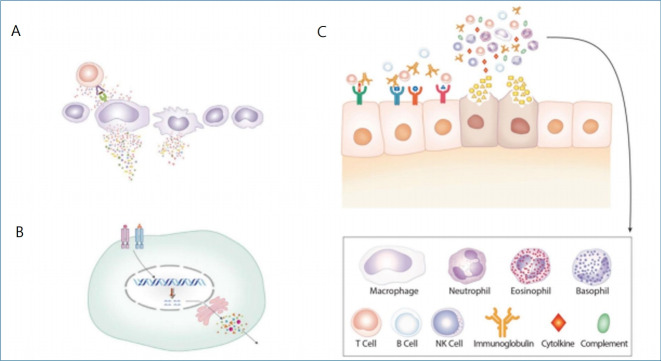Fig. 1.
A presumed pathogenesis of acute lung injury in the novel coronavirus disease 2019 (COVID-19). During the incubation period, the severe acute respiratory syndrome coronavirus-2 virus replicates within certain host cells and numerous substances are produced, including replicated virions, pathogen-origin substances such as pathogen-associated molecular patterns and by-products, and host cell-origin substances such as damage (danger)-associated molecular patterns, immune proteins, pathogenic proteins, and pathogenic peptides. These substances spread via the local or systemic circulation when infected cells are destroyed (A). Among these substances, pathogenic peptides or other substances bind to the receptors on target lung cells, which can be directly toxic to the target cells or signal to immune cells via other proteins produced by the target cells (B). First, activation of nonspecific T cells and other immune cells and/or an aberrant cytokine imbalance induces target-cell injury. Then, substances from injured lung cells and the subsequent bacterial invasion induce further inflammation with corresponding activation of immune cells and immune proteins (C). Once specific T-cell and B-cell clones (specific antibodies) appear to control pathogenic proteins and peptides, the tissue injury ceases. The specific immune cell responses to cellular injury may be delayed or absent in some patients with COVID-19, leading to chronic lung diseases, other organ diseases, or even death. NK, natural killer.

